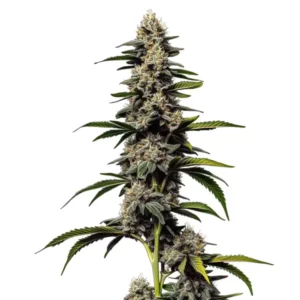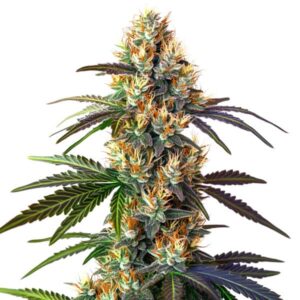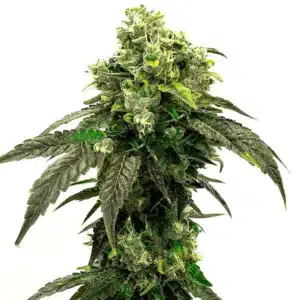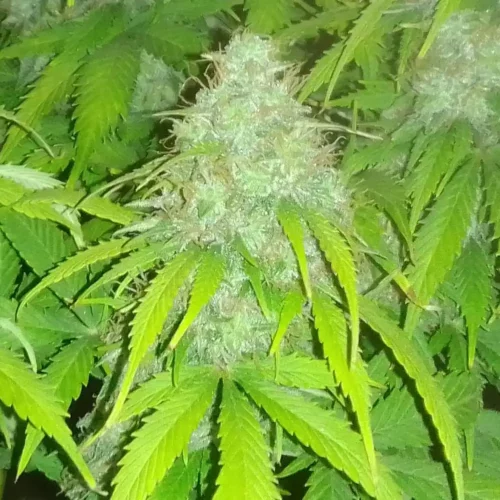A landrace refers to a pure indica or pure sativa plant that is indigenous to the region where it was discovered. Cannabis, initially a wild plant, has been cultivated for thousands of years. You may recall purchasing marijuana labeled as either indica or sativa strains.
Were those strains native? Most likely not. While shopping at seedbanks like Blimburn Seeds, it’s common knowledge that one can search for either a sativa landrace strains, indica landrace strains, or hybrid landrace strains.
Recommended Strains
Hindu Kush
 THC: 15% - 19%
THC: 15% - 19% Type of seed: Feminized
Type of seed: Feminized Phenotype: Mostly Indica
Phenotype: Mostly Indica Day to flower: 8 - 10 weeks
Day to flower: 8 - 10 weeks
Mazar
 THC: 20%
THC: 20% Type of seed: Feminized
Type of seed: Feminized Phenotype: Mostly Indica
Phenotype: Mostly Indica Day to flower: 8 - 10 weeks
Day to flower: 8 - 10 weeks
However, most strains found in online stores are hybrids, either mostly indica or mostly sativa strains, containing more genetic traits from one parent than the other. These strains are identified by their dominant strain for convenience.
Landrace weed strains, which are frequently the only strains that can be obtained that are 100% indica or 100% sativa, are available for purchase. Many enthusiasts often ask, ‘What are the landrace strains and how many exist today?’ The answer lies in understanding their origins, diversity, and preservation efforts worldwide. For this reason, we have created this guide so that you can identify which weed strains, derived from authentic ‘Landrace Strains‘ indica strains, are accessible in our Blimburn Seeds store.
Unique Characteristics of Landrace Strains – Exploring the Differences
Landrace strains are unique in that they resemble the original cannabis plants cultivated for consumption or other purposes. They are either pure sativa or pure indica, but aside from that, they are quite similar to other strains available in the market.
Some enthusiasts claim that landrace strains produce higher amounts of resin and are more potent than other strains. However, it is challenging to validate this assertion since there are numerous strains accessible on the market presently, and assessing the potency and resin content of each one against a landrace strain is a difficult task at best.
Promos & Deals
Indica Landrace strains Cannabis Genetics
While discussing the unique properties and historical significance of landrace strains, it’s also key to acknowledge the growing interest in heirloom cannabis seeds. These seeds, much like landrace strains, represent a lineage of cannabis that has been preserved over generations, often within specific geographic regions. Heirloom cannabis seeds are prized for their genetic purity and the authenticity of the experience they provide. Unlike modern hybrids, these seeds have not been extensively crossbred, maintaining a connection to the traditional cannabis cultivation practices. Their cultivation is not only a nod to cannabis history but also an effort to preserve the diversity and richness of cannabis genetics for future generations.
Origins and History
Indica landrace strains genetics are believed to have originated in cold regions with low humidity, such as Afghanistan, located in central Asia between the western foothills of the Hindu Kush and the deserts of Iran.
With a long-standing tradition in cannabis cultivation and hashish production, Afghanistan is thought to be one of the first territories where this plant was grown in a controlled manner.
Although there is still some confusion about the types of strains traditionally cultivated in this region and the appearance of the Afghan genotype, it’s clear that cannabis likely originated in the slopes of the Himalayan mountain range thousands of years ago.
This entire area boasts a rich cannabis history, as it is not only the birthplace of the Afghani landrace strain or classic Hindu Kush genetics, but also other strains such as Mazar, which originates from the Mazar-i-Sharif region – a territory renowned since the 1960s as one of the world’s epicenters for Hashish production.

The Mazar-i-Sharif lineage has its roots in the Balkh area of northern Afghanistan, which is considered the historic cradle of Afghan cannabis culture. This region is situated beyond the Hindu Kush mountain range, in an area formerly known as Afghan Turkestan – a part of the ancient Central Asian birthplace of the original hashish culture.
Even today, the legacy of historic centers of fine Turkestani resin like Bukhara in neighboring Uzbekistan lives on in northern Afghanistan.
Afghan farmers typically harvest Mazar-i-Sharif during October to early December, in order to produce the renowned ‘Shirak-i-Mazar’ (or ‘Milk of Mazar’) charas – widely regarded as one of the best old-school hashish strains. It’s worth noting that Afghans typically use the terms ‘charas’ or ‘garda’ when referring to hashish.
Best Landrace Indica Strains
Hindu Kush
Hindu Kush is mostly indica landrace strain that originates from the Hindu Kush mountain range, located on the border between Afghanistan and Pakistan. This strain is ideal for cultivation in colder climates with short summers, making it an excellent choice for growers in those regions.
However, caution should be taken in areas with high humidity, as the plant may be susceptible to certain types of fungi. Indoors, Hindu Kush can yield up to 1.47-1.82 oz/ft2, while outdoor production can reach around 21 oz/plant.
Hindu Kush is known for its sedative and relaxing effects, and it can contain THC levels of up to 19%. For this reason, it is a popular strain for treating stress, insomnia, and chronic pain. Regarding flavor and aroma, Hindu Kush has earthy and sweet notes with a hint of spice and sandalwood. Commercial growers prefer this strain due to its ease of cultivation and its ability to produce large, high-quality yields.
Mazar
The Mazar cannabis genetics is mostly indica and believed to have originated in Afghanistan. This strain produces abundant yields and can deliver up to 0.49 oz/ft2 indoors and over 24 oz/plant outdoors. The effects of Mazar are relaxing and sedative, making it ideal for those seeking a calming and restorative effect. THC levels in this strain can reach up to 20%. Regarding the flavor and aroma, Mazar has earthy and fruity notes with a touch of spices and pepper. Overall, this strain is ideal for people suffering from anxiety, insomnia, stress, and chronic pain.
To grow Mazar outdoors, the best techniques are LST (Low Stress Training) and SCROG (Screen of Green), which allow for growth control and maximum production. In addition, Mazar is excellent for extractions due to its high resin content and potent aroma.
It’s worth noting that Mazar has a relatively short flowering cycle of only 65 days indoors, which allows for short and continuous growth cycles, maximizing the yield of your indoor grow room. In outdoor cultivation, you can also cultivate Mazar clones from mother plants to further optimize the growing time of this strain.
Afghan Kush
Afghan Kush is a cannabis strain that originates from the Hindu Kush mountainous region of Afghanistan. This strain is a pure indica and has been used for centuries to produce hashish and other cannabis products.
Afghan Kush buds have earthy and spicy flavors and aromas with hints of wood and pine. THC levels in this strain typically range from 16% – 21%, making it a potent strain that causes relaxing and sedative effects in users. Typical effects include a feeling of euphoria, followed by deep relaxation of body and mind.
In terms of production, Afghan Kush is a heavy yielder and you can expect a yield of around 1.47-1.64 oz/ft2 and around 15-22 oz/plant outdoors. Flowering time for Afghan Kush is around 8-10 weeks indoors, while outdoor harvest is around mid-September.
Afghan Kush is a hardy strain that thrives in cool, dry climates. Its resistance to low temperatures and lack of humidity makes it suitable for cultivation in mountainous regions and similar climates. In warmer, more humid climates, growers must take steps to control humidity and prevent mold and other fungal diseases.
Growing techniques like greenhouse use and controlled irrigation can help growers adapt Afghan Kush to their environment.
Discovering the Rich Cannabis History of Siberia: A Brief Overview
By the end of the 19th century, there was already speculation that cannabis had originated somewhere between the Caspian Sea and the mountains of China.
Today, it is estimated that the plant separated from its ancestors in the high elevations of Central Asia, perhaps near Tibet, and it was nomadic peoples who spread the therapeutic and ritual use of the cannabis plant in the Siberian and Mongolian regions, known for at least 6,000 years.
The true protagonists of the history of cannabis in Siberia were the Scythians, a nomadic and equestrian people who ravaged Greece and ancient China. It is believed that they were among the first cultures to ride horses, and they are credited with inventing another enduring custom: inhaling the smoke from burning marijuana.

However, that’s not the whole story of cannabis in Siberia because there’s also the ruderalis genetics. The first ruderalis plants were described by Linnaeus in 1753, the second in 1783 by Lamarck, and the ruderalis in 1924 by the Russian botanist Janischevsky, who observed that the plants that grew wild in the region of Russia and Siberia were very different from those known in the rest of the world.
The name ruderalis comes from ruderal, a term used to designate various types of plants that grow in soils modified by natural events or by human intervention. It is a very robust genetics, that tolerates extreme climates and has low levels of psychoactive cannabinoids.
Siberian
The Siberian cannabis genetics are mostly indica and originated in the cold region of Siberia, Russia. This strain is highly resistant and can withstand extremely low temperatures, making it ideal for cultivation in cold climates. Siberian is an excellent choice for growers in places with short outdoor growing seasons.
This is because it is a fast-flowering feminized strain that can be harvested in just 55-60 days. Indoors, Siberian can produce dense and resinous buds with THC levels ranging from 12% to 19%. Outdoors, a harvest of approximately 19 oz/plant can be expected, while indoors, up to 0.98-1.15 oz/ft2 can be harvested.
To maximize indoor production, it is recommended to use cultivation techniques such as SOG (Sea of Green) and provide the plants with good ventilation and adequate lighting. Regarding the taste and aroma, Siberian has a complex terpene profile that includes notes of pine, spices, and citrus, giving it an earthy and fresh flavor.
Overall, this strain produces a relaxing and sedative effect that is ideal for helping to alleviate stress and pain, as well as aiding in sleep.
Indica Hybrid with Parent Strains from Indica Landraces
The genetics of Nepal exhibit significant strength in withstanding the harsh growing conditions present in the mountains. Despite experiencing the frigid temperatures of the Himalayan cold during the summer months, these plants boast a rapid flowering period, a compact stature, robust resistance to low temperatures, and dense buds that form with minimal space between branches.

Contrary to popular belief, most Indian landraces are actually 100% ” Sativa Landrance Strains “. Many botanists believe that Cannabis sativa originates from India. Sativas are also known as Narrow Leaf Drugs or NLDs. On the other hand, pure Indicas (known as broadleaf drugs or BLDs) originate from a small area.
This area covers parts of southern Uzbekistan, Tajikistan, Afghanistan, Pakistan, and a small portion of southwestern China. Therefore, many cannabis experts claim that what people call Indicas should actually be called Afghanicas or BLDs to avoid confusion.
Now, the following genetics is of the indica type and contains parents from both Nepal, that is, indica, and also genes from India, therefore, it can be said that it is a mostly indica hybrid.
Nemesis
Nemesis is a cannabis strain that can be considered a landrace strain as it originates from the crossbreeding of two autochthonous genetics, Nepali x India F1. If you’re interested in how to crossbreed cannabis, Nemesis is an excellent example, as it showcases the result of careful genetic selection. THC levels in Nemesis usually range between 15% and 19%, making it a quite potent strain.
Users of Nemesis may experience intense physical relaxation and sleepiness effects. In terms of flavors and aromas, Nemesis has an earthy taste with prominent pine undertones, as well as sweet and fruity notes and a lemon and spice aroma. Making hashish and essential oils with this strain is recommended.
Regarding the flowering time, Nemesis usually takes between 7 and 9 weeks to flower in indoor cultivation and can be harvested in mid/late September in outdoor cultivation in the south of the USA. In the central states of the United States, it is recommended to cultivate it between May and October, while in the northern states, it can be cultivated from early May until before the first rains appear, to avoid damaging the harvest due to the appearance of fungi.
To maximize the production of Nemesis plants in indoor cultivation, cultivation techniques such as SOG (Sea of Green) or SCROG (Screen of Green) are recommended. These techniques allow for the maximization of the amount of light received by the plants and encourage the growth of multiple buds.
We have seen in this article some of the main landrace indica cannabis genetics and also, we have also seen which are the hybrid type strains that have landrace indica parents. On the other hand, you were able to learn a little about the history of these strains that today are the genetic basis of some of the most famous cannabis seeds that are sold in the world market and that you grow at home. Now, we invite you to buy these seeds here at Blimburn Seeds because, as you know, we have high quality standards and our seeds guarantee great yields and wonderful buds. See you in the next post on our blog.


















